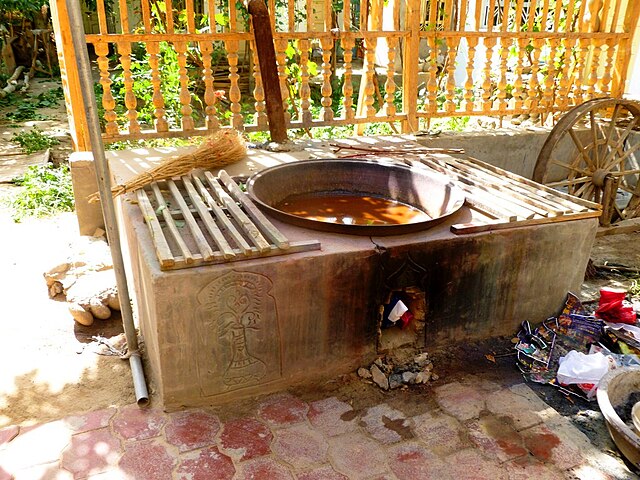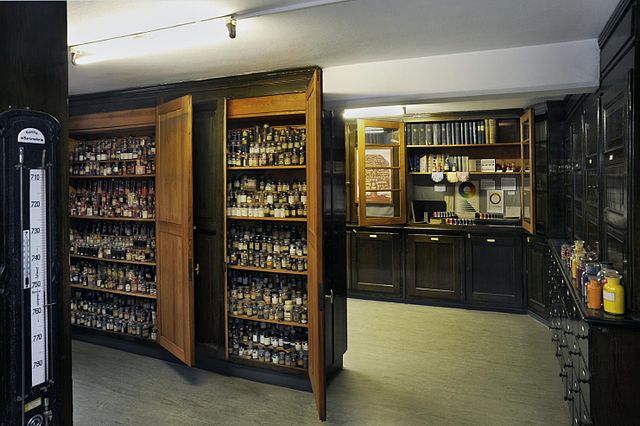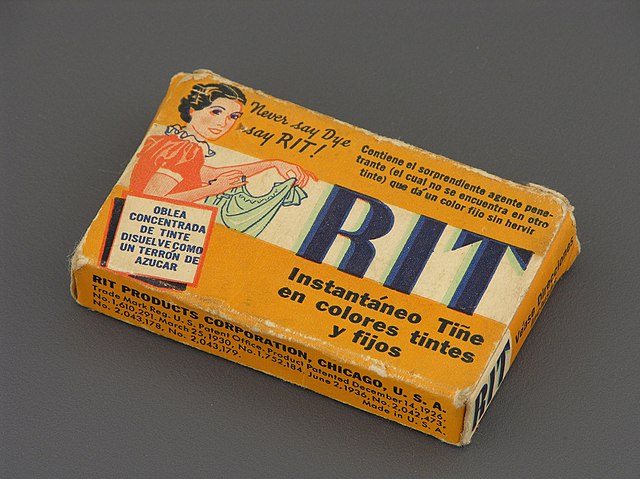Dyeing is the application of dyes or pigments on textile materials such as fibers, yarns, and fabrics with the goal of achieving color with desired color fastness. Dyeing is normally done in a special solution containing dyes and particular chemical material. Dye molecules are fixed to the fiber by absorption, diffusion, or bonding with temperature and time being key controlling factors. The bond between the dye molecule and fiber may be strong or weak, depending on the dye used. Dyeing and printing are different applications; in printing, color is applied to a localized area with desired patterns. In dyeing, it is applied to the entire textile.
Dyeing
Pigments for sale at a market in Goa, India
Cotton being dyed manually in contemporary India
Silk dye in pan on stove. Khotan
A dye is a colored substance that chemically bonds to the substrate to which it is being applied. This distinguishes dyes from pigments which do not chemically bind to the material they color. Dye is generally applied in an aqueous solution and may require a mordant to improve the fastness of the dye on the fiber.
Drying colored cloth
Dyeing wool cloth, 1482: from a French translation of Bartolomaeus Anglicus
Historical collection of over 10,000 dyes at Technical University Dresden, Germany
RIT brand dye from mid-20th century Mexico, part of the permanent collection of the Museo del Objeto del Objeto








